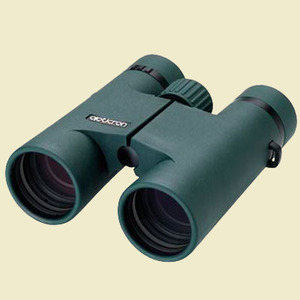

With spring just around the corner, and the fact that this weekend is the RSPB’s “Big Garden Birdwatch” I thought I’d attempt to answer a question that I’m frequent asked.
“Which binoculars are best for wildlife watching?”
“What do all of these confusing numbers mean?”
I used to volunteer as an optics salesman for the Wildlife Trust, and so would often find myself trying to explain what the different numbers, shapes and sizes of the binoculars mean. It seems it’s really quite a common and somewhat baffling problem for many people who are new to wildlife observation.
So, I hope this non-scientific approach helps you with your decision making, and if so, please leave me some feedback on the comments section below.
Choosing binoculars isn't easy, due to the extensively large ranges and confusing sets of numbers displayed on the binoculars. Sometimes advertisements make hugely exaggerated claims, or push impressive sounding features, such as “zoom” binoculars, which are aimed as a sales point, a feature which is literally pretty useless in the field.
Ultimately only you can make the correct choice for you, bearing in mind price, performance, size, durability, and your own particular needs. You also need to bear in mind, that we are all very different, in terms of eyesight, and facial structure, meaning one pair of binoculars (even hugely expensive ones) may not suit you at all.
Binoculars always come with two sets of figures, which are usually found on the focusing wheel, or sometimes more easily found on the box.
The figures look like this (e.g. 8x32), occasionally accompanied by some letters which usually relate to the style of eyecups or type of coating on the lenses.
Using an example of (8x32) I will explain what these figures mean. The first number, in this case the (8) relates to the magnification, so here the image will appear (8x) larger than life size. As a general rule for wildlife watching or general use then ideally you require a minimum magnification of (8x) or a maximum of (10x). The more powerful the magnification the harder the binoculars are to keep still without the use of a support. In the field, especially when attempting to identify wildlife, you will need to be able to keep the optics as still as possible.
The second number, here (32) is the size, in diameter of the objective lenses (lenses at the front) in millimetres. The larger this number the more light that enters the front element (lens), meaning a brighter image. The downside is the larger these lenses are, the heavier and bulkier the optics become. An objective lens of (32) is the preferred choice by many, as it offers a bright image and yet isn’t overly large and cumbersome.
These are all of the basics that you need to know. If you’re considering buying a very expensive pair of optics, then it’s worth doing more research into types of glass and the coatings used on them, although this is really something that you only need worry about if you intend on being a serious user of the equipment.
One other thing to look out for is binoculars that are filled with nitrogen. This simply means the (internal) barrels will not steam up when being used. Most good optics feature this these days as well as waterproof bodies.
Another thing that many folk tend to skimp on, is that of the strap. The strap is just as important as the binoculars, as the thin straps provided in the box are usually quite uncomfortable when being used for prolonged periods of time. Therefore, I highly recommend spending £15-£20 on a good wide and thick neoprene strap (you’ll thank me later).
Lastly, if you intend on buying your binoculars online, always try to test them out first to make sure they suit your eyes and facial shape.
I always remember meeting one man who had eyes which were very close together, and he wasn’t actually able to use many standard binoculars, but at least he had a good sense of humour about it!
I hope you found this useful, and if so, or if you’d l like me to explain anything else, please leave me some comments below.
Catch you on the trail
Kris
